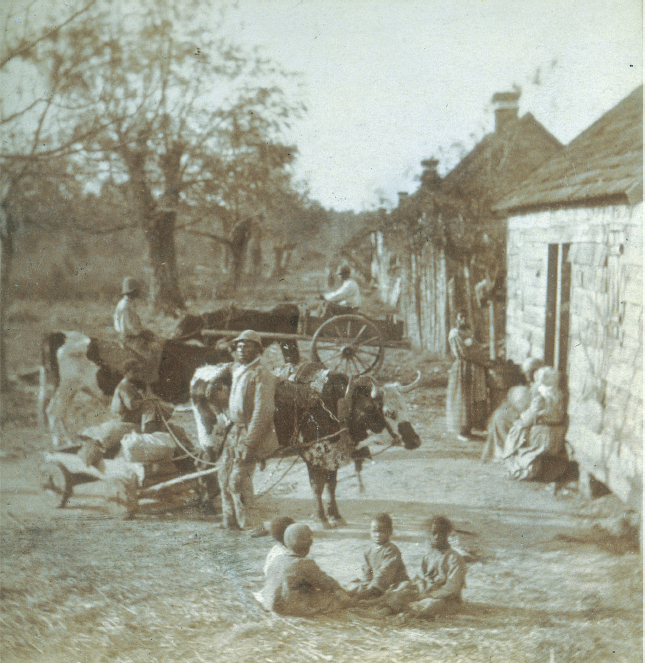What was plantation life like for slaves?
Printed Page 372

CHAPTER LOCATOR
Why did the South become so distinctly different from the North?
What was plantation life like for masters and mistresses?
What was plantation life like for slaves?
How did nonslaveholding southern whites work and live?
What place did free blacks occupy in the South?
How did slavery shape southern politics?
Conclusion: How did slavery come to define the South?
 LearningCurve
LearningCurve
Check what you know.
ON MOST PLANTATIONS, only a few hundred yards separated the big house and the slave quarter. But the distance was great enough to provide slaves with some privacy. Out of eyesight and earshot of the big house, slaves drew together and built lives of their own. They created families, worshipped God, and developed an African American community and culture. Individually and collectively, slaves found ways to resist their bondage.
Despite the rise of plantations, almost half of the South’s slaves lived and worked elsewhere. Most labored on small farms, where they wielded a hoe alongside another slave or two and perhaps their master. But by 1860, almost half a million slaves (one in eight) did not work in agriculture at all. Some lived in towns and cities, where they worked as domestics, day laborers, bakers, barbers, tailors, and more. Other slaves, far from urban centers, toiled as fishermen, lumbermen, railroad workers, and deckhands on riverboats. Slaves could also be found in most of the South’s factories. Nevertheless, a majority of slaves (52 percent) counted plantations as their workplaces and homes.
KEY FACTORS
- – An overwhelming majority of plantation slaves worked as field hands.
- – Nine out of ten house slaves were women.
- – Family and religion provided refuge for slaves.
- – Slaves resisted by running away; outright rebellion was rare.